Her name is beautiful and reminds us of her Roman past. However, just take a quick look to the top of Constantine , the one that seems to ascend the hill of the castle with a heavy and complaining air -especially in the hot Sevillian summers-, to realize that through its veins runs arab blood.
Be that as it may, Constantina does not want to look at the past , like that proud lady who does not want to count her wrinkles or cry her sorrows, but to show off her most seductive smile for win over travelers who decide to get lost in its streets.
Some streets to which those typical low-rise Andalusian houses and whitewashed facades. Some streets interrupted, here and there, by small squares dominated by fountains and surrounded by churches. Some streets to which the fresh breeze brings the sweet aroma of the pastures, the olive groves and the forests of the mountains in which this Sevillian treasure is camouflaged.
Constantina surprised us with her humility, her history, her gastronomy and her landscapes, but above all she made us fall in love with her when we saw her through Valdi's eyes , a cicerone who perfectly combines his clear professional vocation as a teacher, with his passion for his native place and that innate bonhomie that makes people shine.
Through his eyes we discover this encrusted diamond in the heart of the Sevillian Sierra Norte.
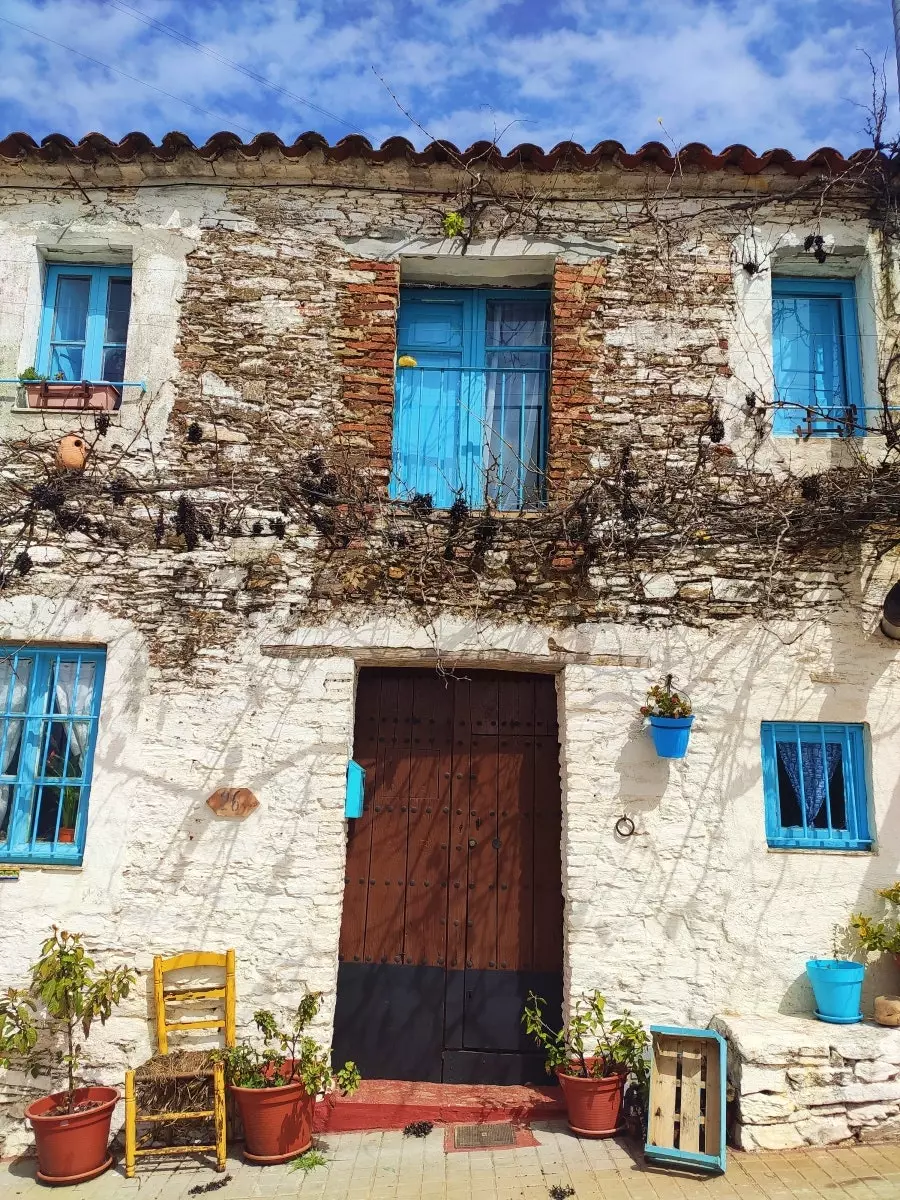
Constantina and her charming houses.
THE MOORIE OF CONSTANTINE
Like so many other towns in the Andalusian mountains, Constantina cannot – nor does it want to – hide its Arab past when you visit the streets of its historic center.
The Moorish neighborhood of Constantina It stretches between two of the city's icons: the Parish Church of Santa María de la Encarnación and the castle.
Meeting us in front of the church, which we would visit later, "El Maestro" -who was what everyone we came across called Valdi- led us through Parroco Gonzalez Serna Street to face the first slopes of that primitive neighborhood, of narrow and winding streets, honoring his muslim past.
So we go through low houses with white facades , barred windows and narrow balconies from which you can almost touch the hair of passers-by.
We found it to be a beautiful place, where we could almost imagine what life had been like centuries ago. However, Valdi snapped us out of our reverie by sharing his thoughts out loud: “Years ago, all these streets were full of pots and flowers , who were cared for by older people. As they leave us, no one takes care of them anymore.”
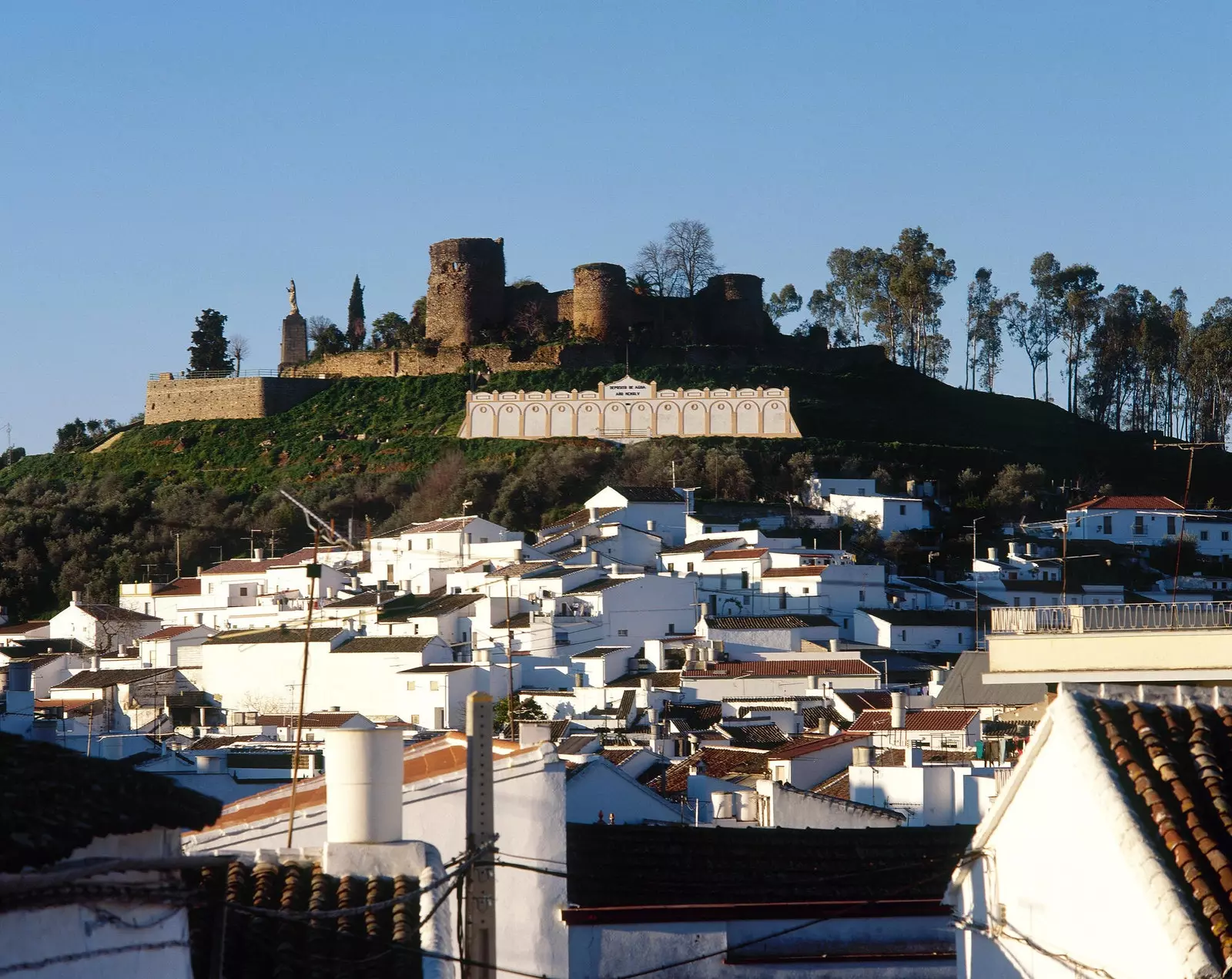
Constantine Castle still maintains its dominant position.
And he was right, but, even in its nudity, that Morería de Constantina seemed beautiful and mysterious to us, aligned with the stories that “El Maestro” told us about a childhood in which the neighborhood was very alive , with children shouting and playing and adults talking on those summer nights when wooden chairs were taken out of the houses.
THE CASTLE, THE VIEWPOINT AND THE SACRED HEART
Enjoying the echo of memories of him, "The Master" led us to one of the best viewpoints of Constantine . It is located at the top of the Morería, just below the remains of its Moorish castle.
From there you could see the profile of the town perfectly, as well as the surrounding mountains and fields. It seemed so compact that I found it hard to believe that down there 6,000 souls inhabited , a population that, according to what our cicerone told us, increases considerably in summer, when the tourists arrive and the constantinens return who emigrated from the town and now have their summer residence there.
After enjoying the views, we turn to visit the constantine castle . The old fortress, despite extensive restoration and conservation efforts, has seen better days, but it still looks mighty from its commanding position.
Although it was the Arabs who developed it properly, there is archaeological evidence that confirms that it was built on remains of a Roman defensive post . And it is that its location was strategically privileged, scrutinizing the fields of the Osa Valley.
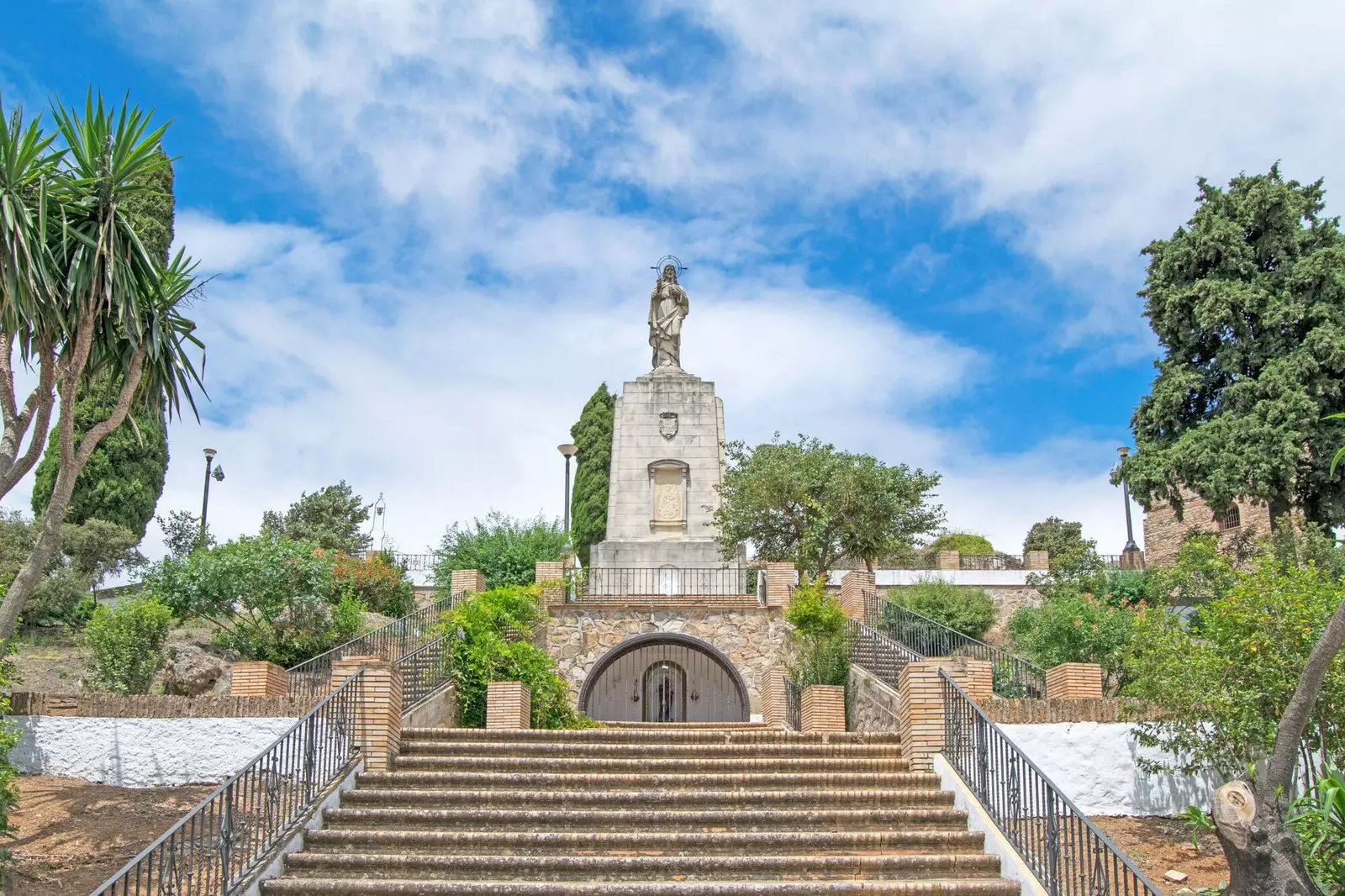
The Sacred Heart of Jesus, one of the most popular monuments in Constantine.
Inside we could see its cistern, the parade ground, the walls and a tower , although the great Torre del Homenaje collapsed a little over a decade ago.
We leave the castle to start our way back to the center of Constantine, but not before taking a look at the striking monument of the Sacred Heart of Jesus , a large sculpture created in 1954 by order of the local priest at that time, Father Félix.
Under the monument – which is 21 meters high – there is a small chapel. It is said to symbolize Christ blessing the population.
THE PARISH CHURCH AND ITS CENTENARY CLOCK
We went down the Morería to reach the gate of the Parish Church of Santa María de la Encarnación , the most important religious temple in Constantine.
And it is that its impressive tower, about 50 meters high It can be seen from almost anywhere. A tower to which we find a certain resemblance to the Seville Giralda from the first glance.
And it is that, although the temple is from the 14th century and in Mudejar style In the 16th century, the master Hernán Ruiz II “el Joven” was in charge of intervening in the tower. He was also the one who directed the reforms of the Cathedral of Seville and other emblematic buildings of the Seville capital and Córdoba.
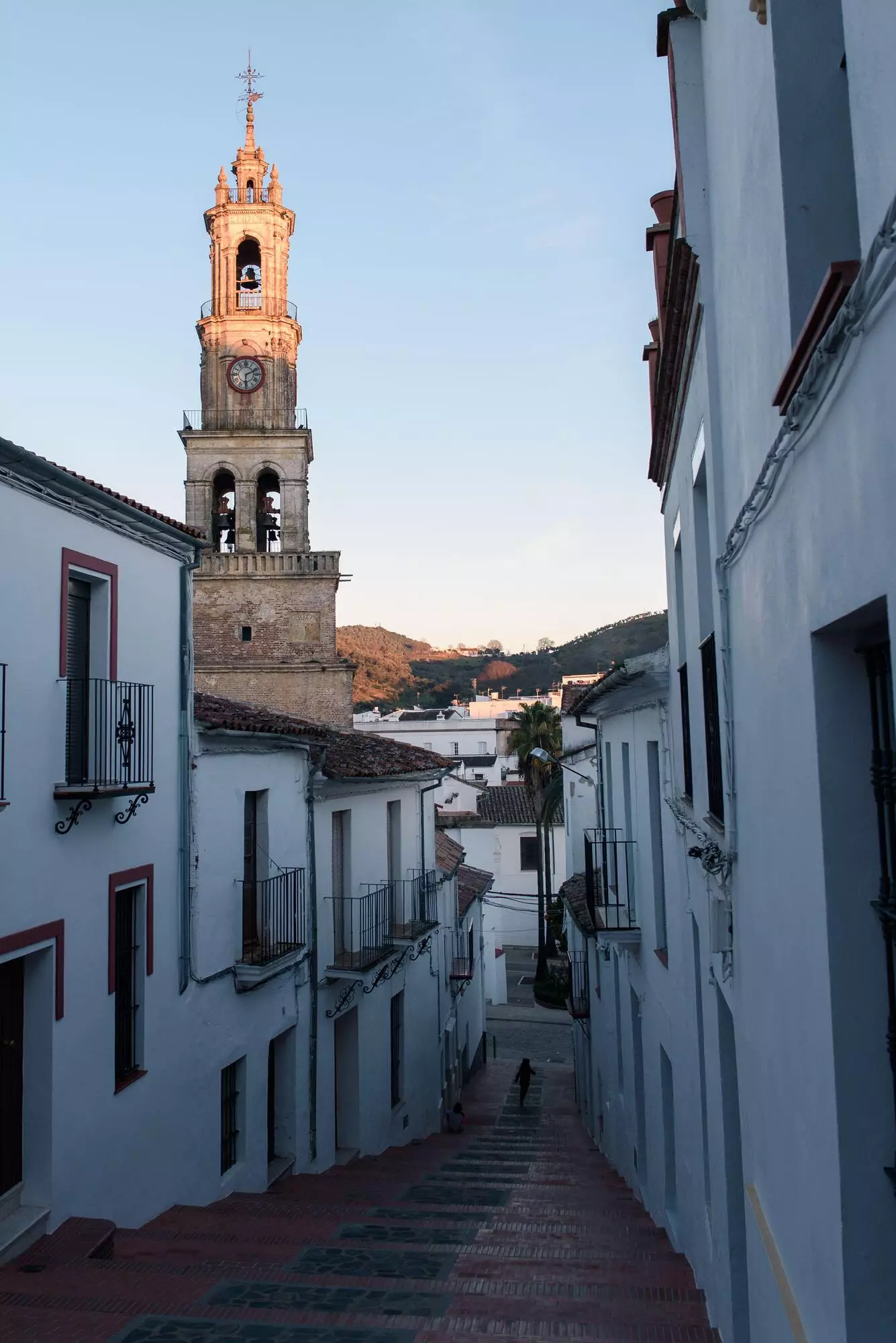
The tower of the Parish Church of Santa María de la Encarnación can be seen from anywhere in Constantina.
Our friend knew all this very well, since he has the honor of being one of the watchmakers of this church of Constantine. His ancient watch is his greatest treasure. Valdi told us his story as we climbed the almost 90 steps of the spiral staircase that led up to him.
The clock of the Parish Church of Santa María de la Encarnación is an authentic museum piece. It was placed in the tower in 1890 and its mechanism of operation has been the same ever since.
You have to wind it every day. of your machinery three weights hang , whose weight, helped by gravity, causes the force that, through axes, sets the needles in motion. The weights it takes 24 hours to hit the ground , that's why you have to upload them daily, preventing the clock from stopping.
"El Maestro" showed us the entire operation of a clock that, moreover, had just been oiled. Furthermore, we had the honor of turn the crank lifting the main weight, which was about to hit the ground.
It was wonderful to be able to admire that ancient machinery up close and listen to the explanations of one of its caretakers.
These types of clocks used to have an important meaning in society, marking the hours, but also masses, funerals, celebrations and other events. To do this, the one in Constantina was helped by eleven bells that still chime today, reminding the neighbors of a beautiful past.
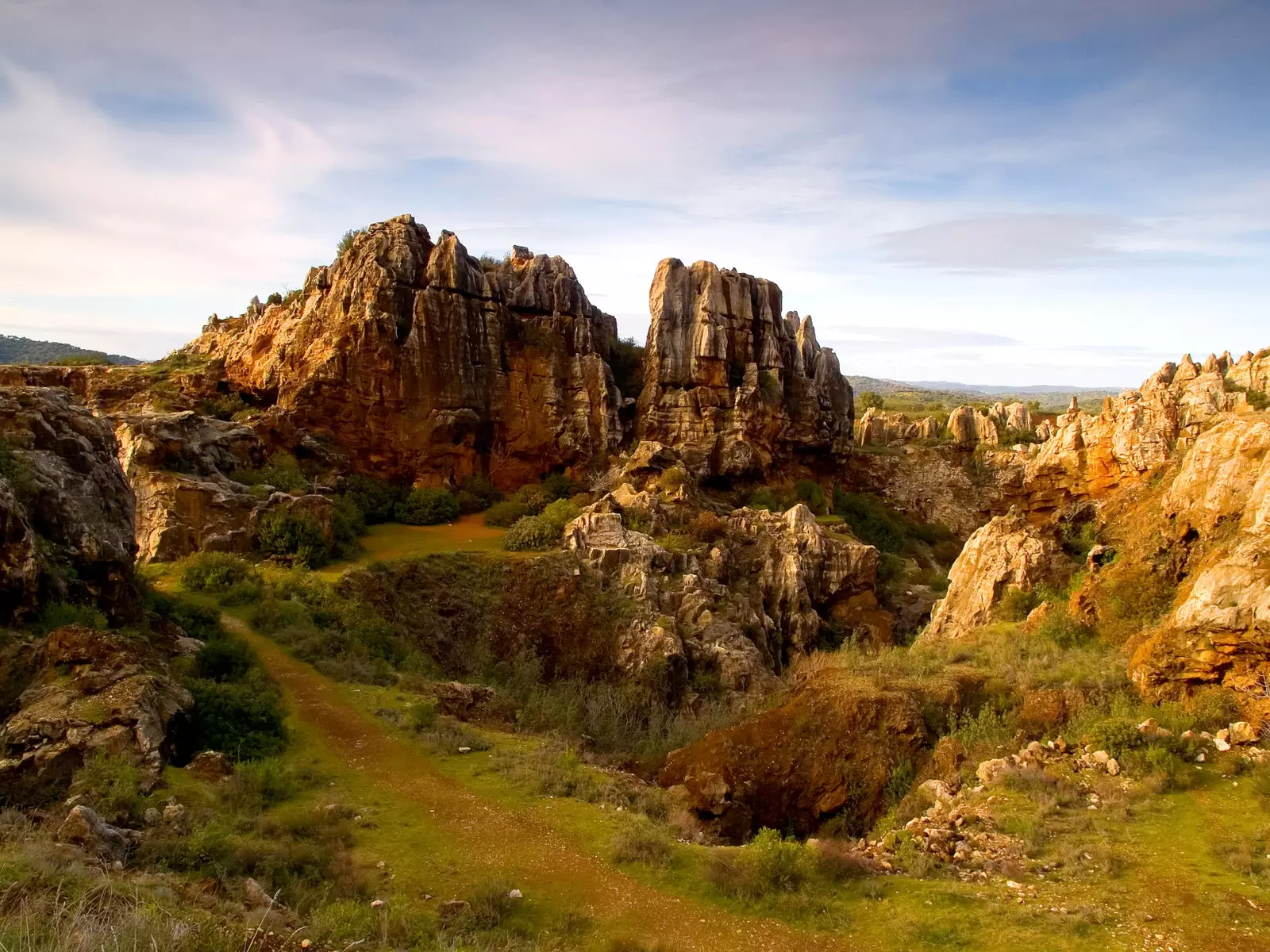
There are also hiking trails in Constantina, such as the Cerro del Hierro.
CULTIVATION FIELDS AND NATURAL LANDSCAPES
We left the city with the promise of returning as soon as we could, since we were left in the inkwell to visit places like the curious Gurugu's house -located on the outskirts and residence of Idente Missionaries-, The Carlina -a house with a very curious history and that has been converted into a hostelry and Jerónimas Convent (its handmade sweets are from another world)-, the Alameda walk –where you will find grills and bars where you can taste the tasty cuisine of Constantine, based on pork and game meat– and the beautiful squares and fountains.
However, we didn't want to leave without walking through those beautiful fields that we saw from the castle, so we dedicated a few hours to explore olive groves, meadows and cattle trails , discovering a rural image that ended up making us fall in love, forever, with that place.
Some of the most popular hiking trails in Constantine are the chestnut tree (on the road to San Nicolás), that of El Robledo or the one that leads to the beautiful Iron Hill , Natural Monument that is located about 10 km from Constantine.
On this hill there was an iron mine exploited by the Romans and that today, as it always happens, it has been taken back by nature. A wise, honest and endearing nature. A nature that is still reflected in men like Valdi and towns like Constantina.
